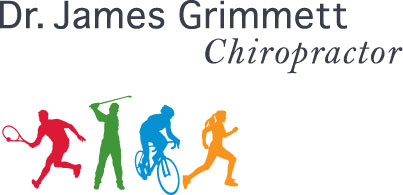Active Release Techniques® (ART)®
ART® is a hands-on approach to diagnose and treat soft tissue injuries. In this case soft tissue injuries refer primarily to muscles, tendons, nerves and ligaments.
ART® is used to treat acute strains and sprains as well as chronic overuse conditions such as tennis elbow, carpal tunnel syndrome, runners knee, low back pain and the likes. These overuse conditions go by the names of RSI and CTD (repetitive strain injury and cumulative trauma disorder) and are very common conditions in today’s society. They tend to occur as a result of a poorly healed acute sprain/strain or from repeated minor trauma such as tennis elbow in an office worker who spends all weekend hammering nails into a deck. The repeated small insults cause micro damage to the tissue which if bad enough can present with pain, swelling, tingling, numbness, burning, weakness and tightness. As the person continues to use the affected body part, the cycle of ‘insult and injury’ worsens.
Accurate diagnosis is required to treat these soft tissue conditions successfully. ART® makes a diagnosis by identifying the exact site of injury, the type of tissue involved (e.g. muscle, ligament, nerve, etc.) and the correct nature of injury such as a recent tear or longstanding muscle strain (e.g. scar tissue).
ART® is distinct but not dissimilar to other techniques such as mobilizing and massage. What differentiates ART® from other soft tissue therapies is ‘movement’. For example, in treating RSI’s the movement is ‘active’ (i.e. done by the patient) for the purpose of getting the damaged tissue (e.g. scar tissue) to stretch in it’s limited range. While this movement is occurring the practitioner maintains a firm finger pressure feeling the damaged tissue come under tension. It is this lengthening action coupled with the specific finger pressure that creates enough tension to break up or ‘release’ the damaged tissue. Once the ‘old’ damaged tissue is broken up, the soft tissues will begin to move again with full function.
There are specific procedures designed for each type of symptom pattern. Providers include physicians, physiotherapists, chiropractors, osteopaths, physical and occupational therapists, and massage therapists.
Dr. James Grimmett has had good success in treating numerous soft tissue injuries, ranging from the resolution of pain and weakness from carpal tunnel syndrome and calf muscle tears, to the restoration of full range of motion without pain in chronic shoulder and neck injuries. He has provided treatment to: professional athletes (e.g. NHL hockey players, and CFL football players); Olympic and national team members (track and field, soccer, power lifting, rugby, badminton, squash, and cricket) as well as triathletes (at Penticton Ironman Triathlons), and professional dancers.
One major strength of ART® is that a long course of treatment is generally not necessary. In many cases, only 4 to 5 treatments will fix the problem or result in significant improvement. If this improvement is not seen by the fourth treatment ART® is not likely to be of help and would be discontinued. Rehabilitation (e.g. exercises) complements ART® well and is almost always necessary for maximum recovery in long standing or recurrent cases. Preliminary studies have shown ART® to be more effective than conventional treatments for some soft tissue injuries*.
Workers’ compensation organizations (Colorado Division of Labour has made ART® the standard of care for CTDs prior to any surgical intervention), professional and amateur athletic programs, and world-class athletes recognize ART® as a successful way of treating and managing soft-tissue injuries.
* References:
1. Mooney, V., Overuse syndromes of the upper extremity: Rational and effective treatment, The Journal of Musculoskeletal Medicine, August 1998
2. Schiottz-Christensen, B. et al., The role of Active Release Manual Therapy for upper extremity overuse syndromes – a preliminary report. The Journal of Occupational Rehabilitation, June 1999
